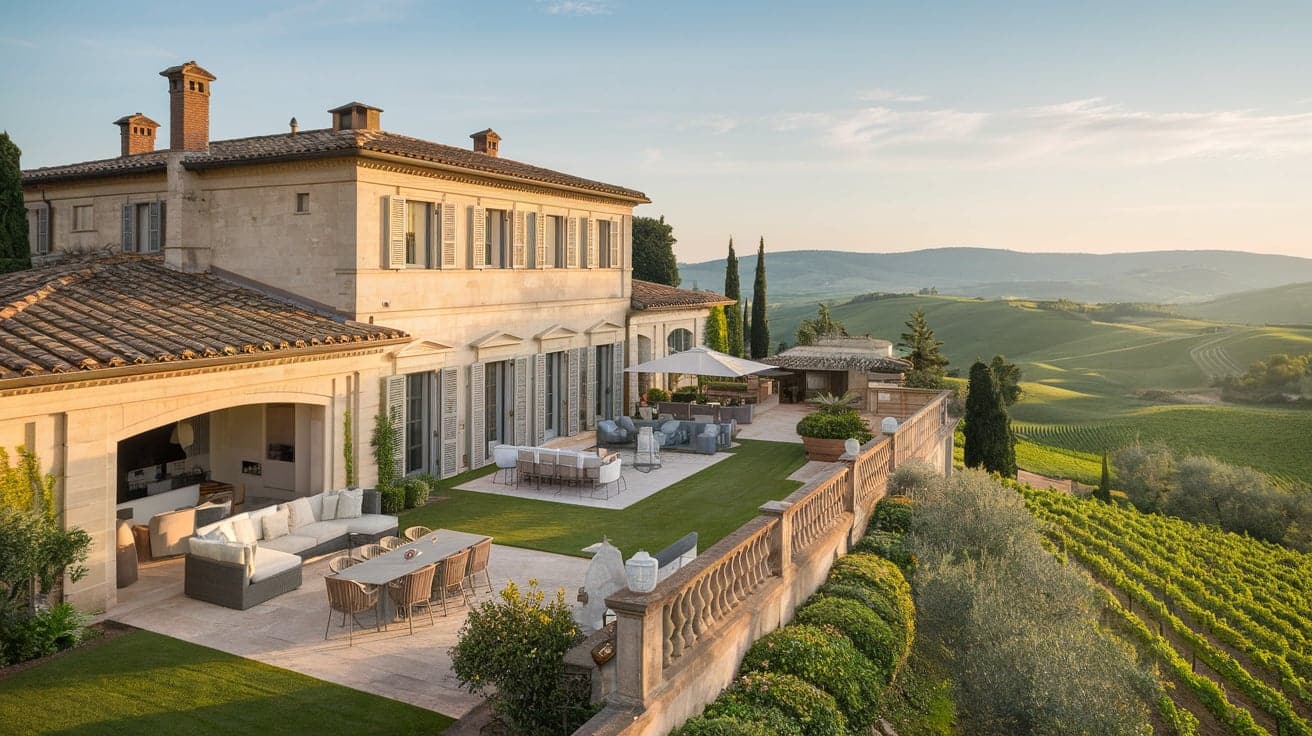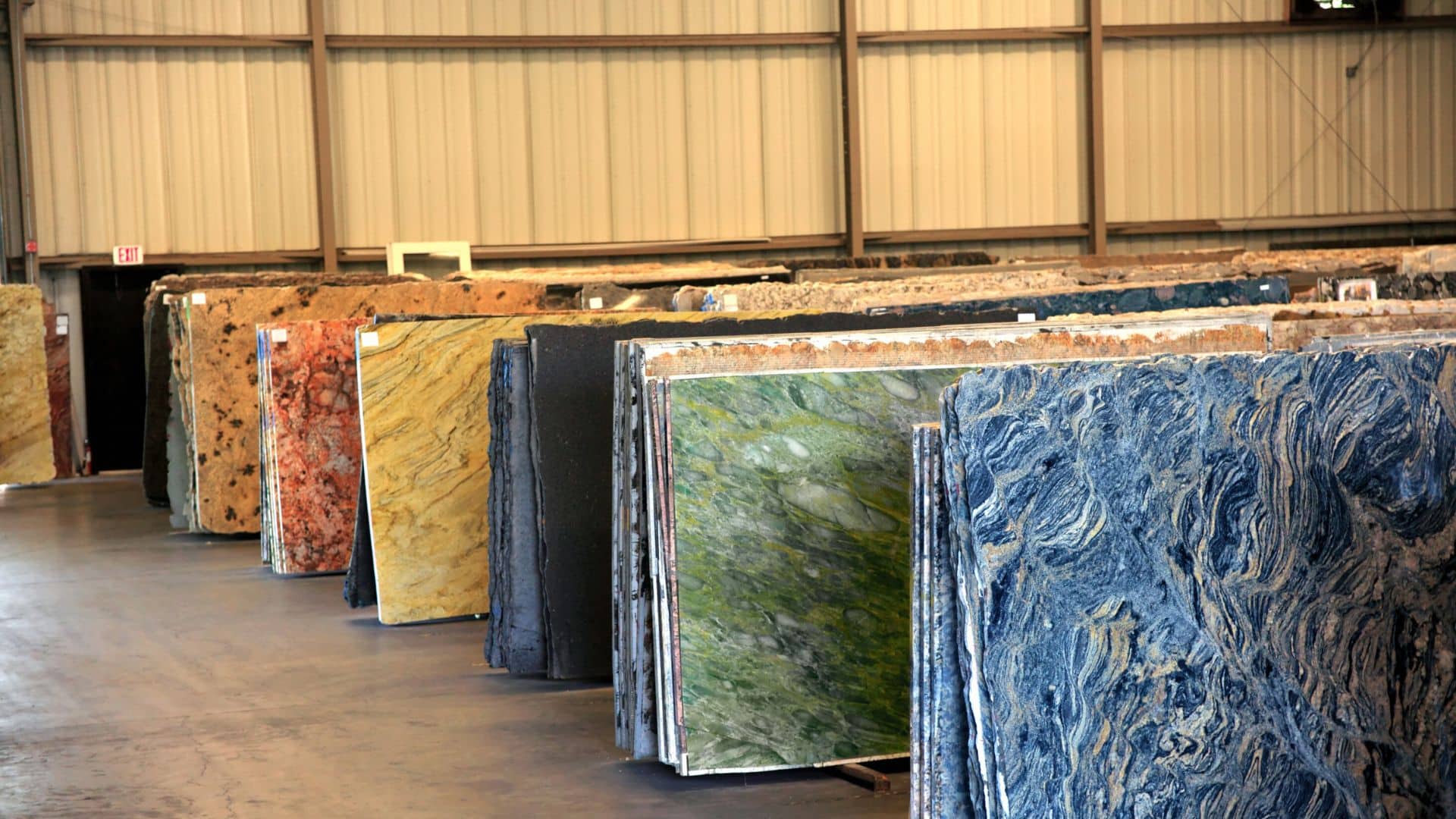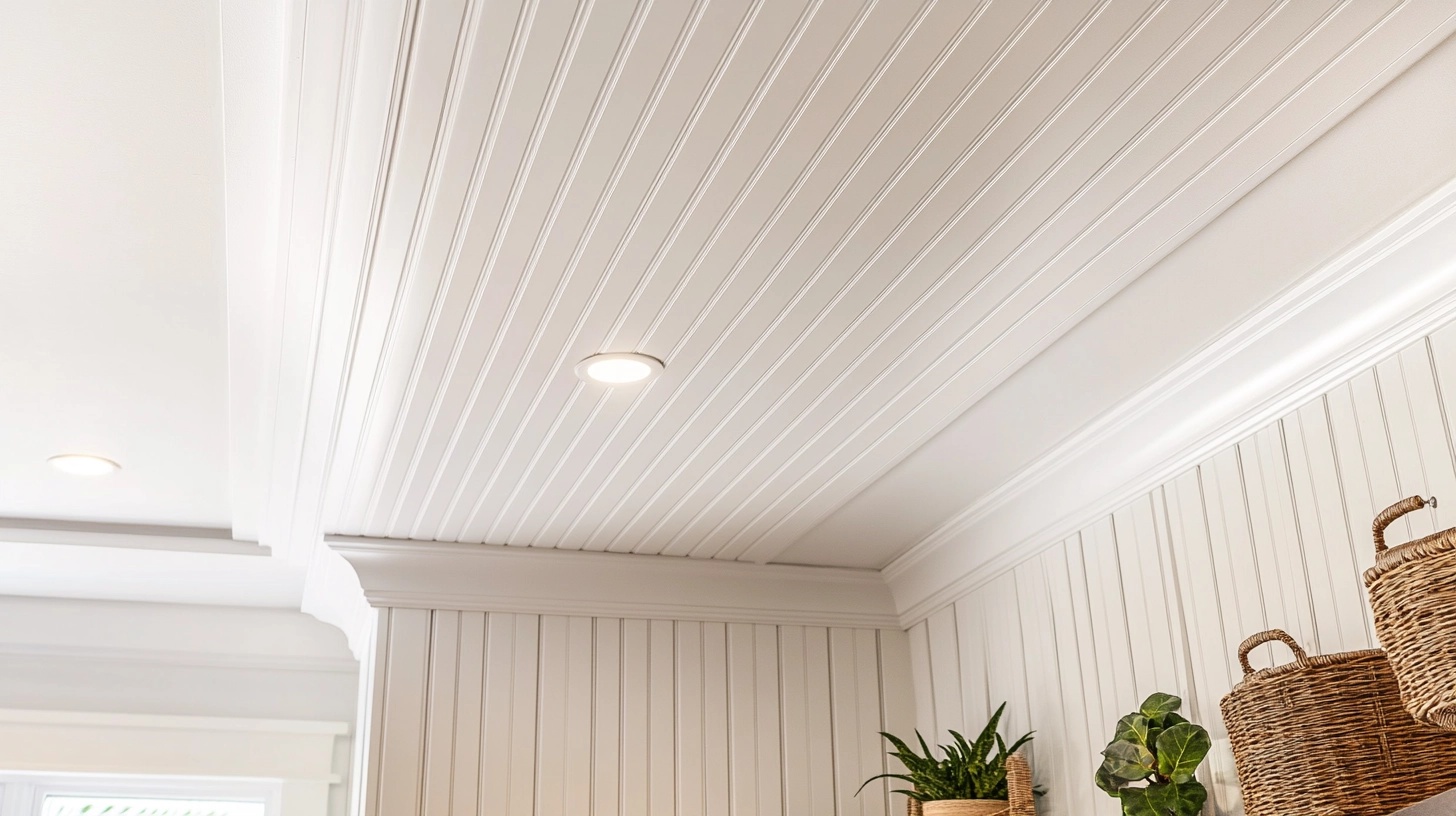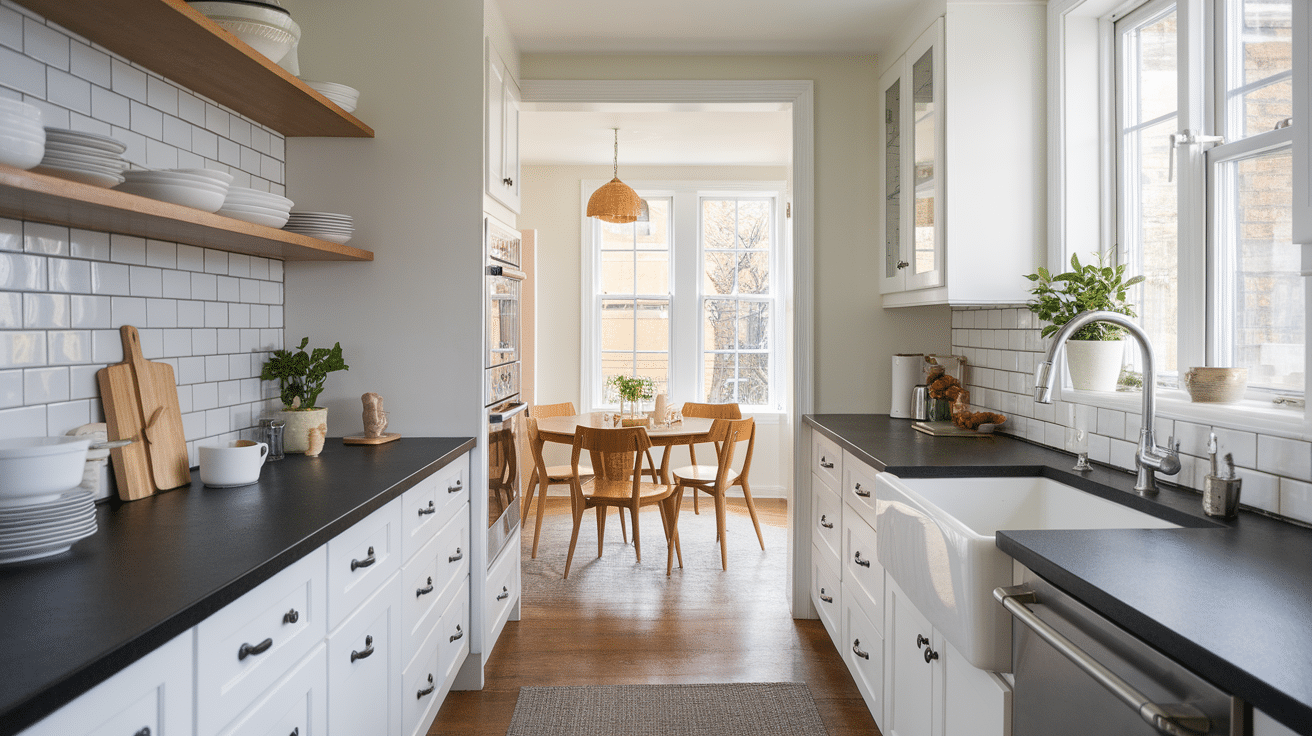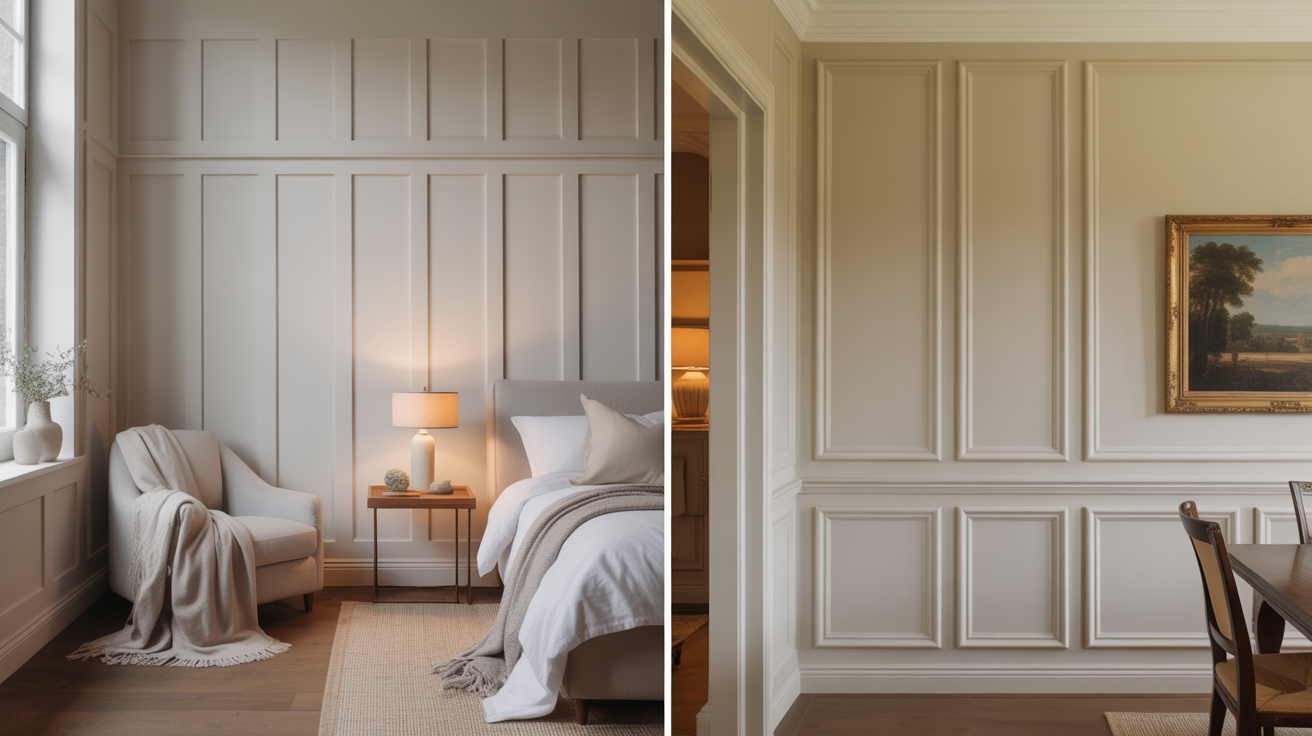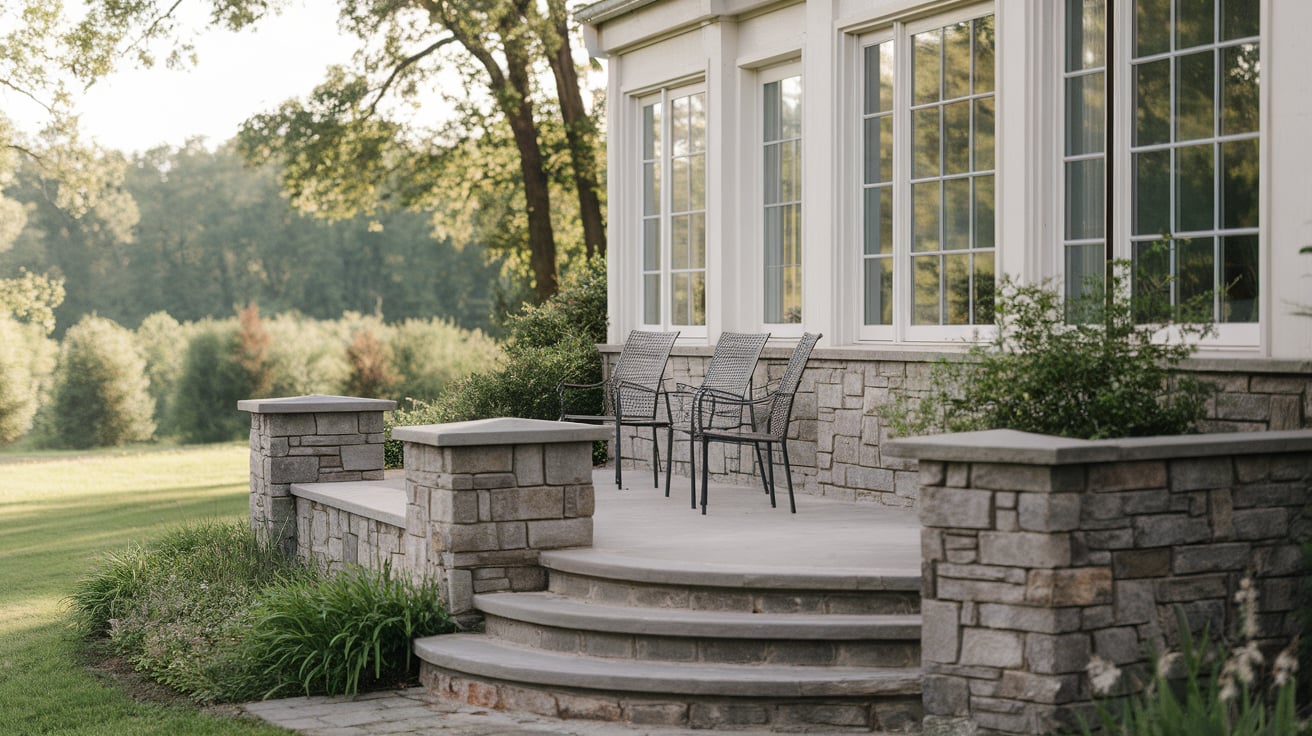Italian Villa House: A Mix of Architecture, Design, & Beauty
Ever dreamed of waking up to panoramic views of rolling Tuscan hills or the shimmering waters of Lake Como? Italian villas aren’t just homes – they’re gateways to a lifestyle that has attracted people for centuries.
From ancient Roman retreats to modern lakeside estates, these architectural gems blend history, beauty, and comfort in a way that feels both luxurious and welcoming.
In this guide, we’ll find out
- What makes Italian villas special?
- How they vary across regions?
- Notable Italian villa houses to visit
- What to consider if you’re looking to buy, renovate, or just appreciate these beautiful properties.
Ready to be inspired? Let’s journey through Italy’s most beautiful homes.
Key Features of Italian Villa Construction
Let us take a look at some common key elements that you’ll notice in most Italian villas.
1. Balanced Layouts and Proportions
Italian villas are designed with symmetry and proportional harmony in mind. The balance between indoor and outdoor areas and the arrangement of rooms creates a sense of order and style.
Classic principles of geometry guide the layout, ensuring that spaces flow seamlessly while maintaining a refined art.
2. Integration of Indoor and Outdoor Spaces
A defining characteristic of Italian villas is their seamless transition between indoor and outdoor areas.
Features such as loggias, terraces, and courtyards provide open-air living spaces that encourage relaxation and social gatherings.
These elements not only improve the home’s visual appeal but also promote a deeper connection with nature.
3. Use of Local Materials
Traditional Italian villas utilize regionally sourced materials, which contribute to their classic appeal.
Stone, terracotta, and marble are commonly used in both construction and interior finishes, ensuring durability and authenticity.
These natural materials also help villas blend harmoniously with their surroundings while maintaining a warm and inviting atmosphere.
4. Harmony with the Surrounding Landscape
Italian villas are designed to complement rather than dominate their natural environment.
Situated in rolling Tuscan hills, overlooking the shores of Lake Como, or perched along the Amalfi Coast, these homes are carefully positioned to take advantage of scenic views.
The incorporation of lush gardens, olive groves, and vineyards further improves their picturesque charm.
5. Structural Elements
Italian villas showcase distinct architectural features that contribute to their grandeur.
Arches, columns, and high ceilings are common, lending an air of openness and polish.
These structural elements serve artistic purposes and improve ventilation and natural lighting, making the home both stylish and functional.
Italian Villa Types Across Regions
Italian villas vary across regions, reflecting the landscape, climate, and local culture.
From Tuscany’s rustic charm to Lake Como’s grand estates, each villa type offers a unique perspective into Italy’s heritage.
Tuscany: Countryside Homes with Rustic Features
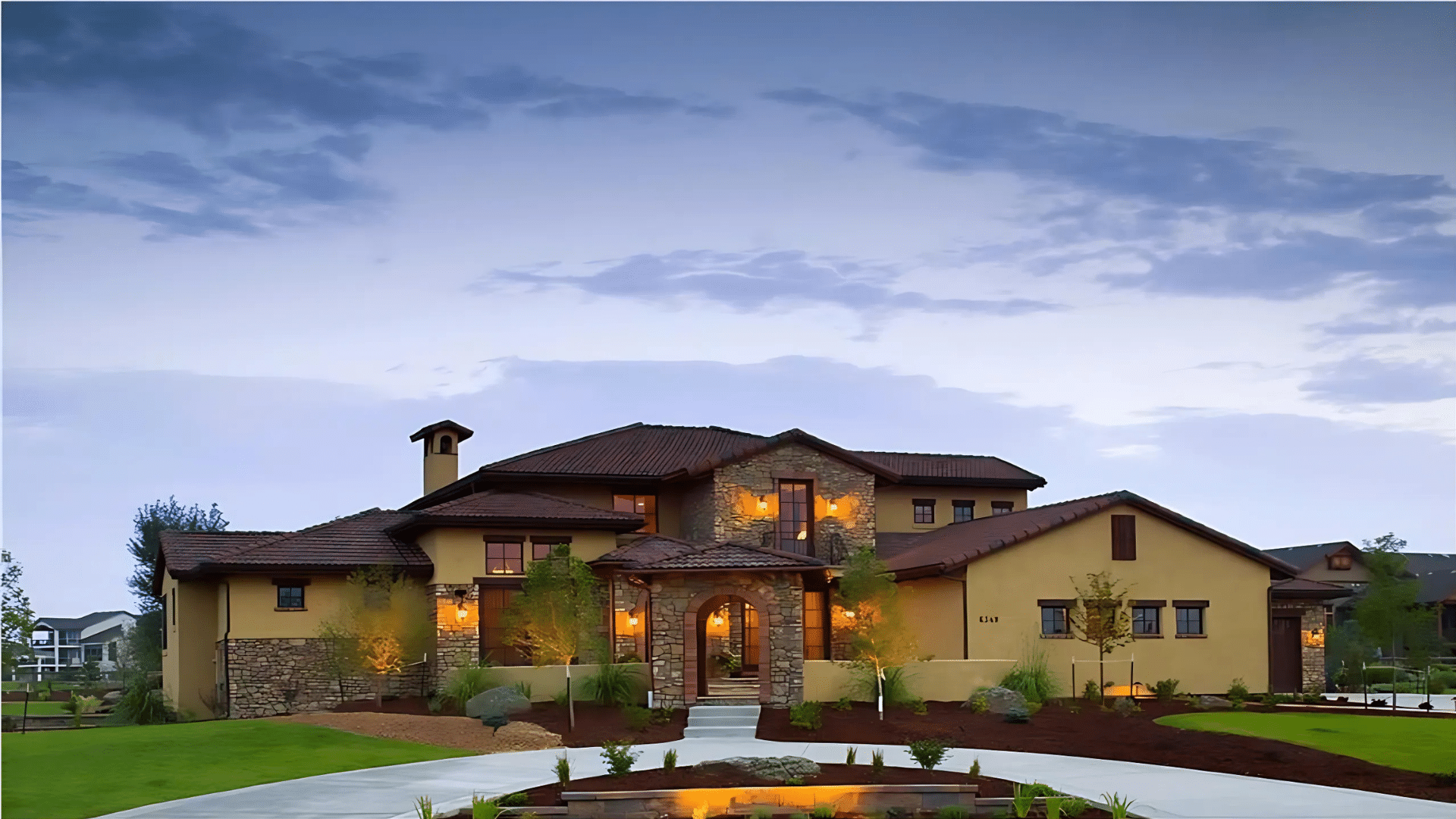
This region is known for its iconic rustic villas that blend seamlessly with the rolling hills of vineyards and olive groves.
Traditional Tuscan homes are built using warm-toned stone, terracotta roofs, and exposed wooden beams.
Type: Tuscan villa
Access: Visit the Tuscan countryside to experience the authentic charm of these rustic homes.
Lake Como: Waterfront Properties with Classical Elements
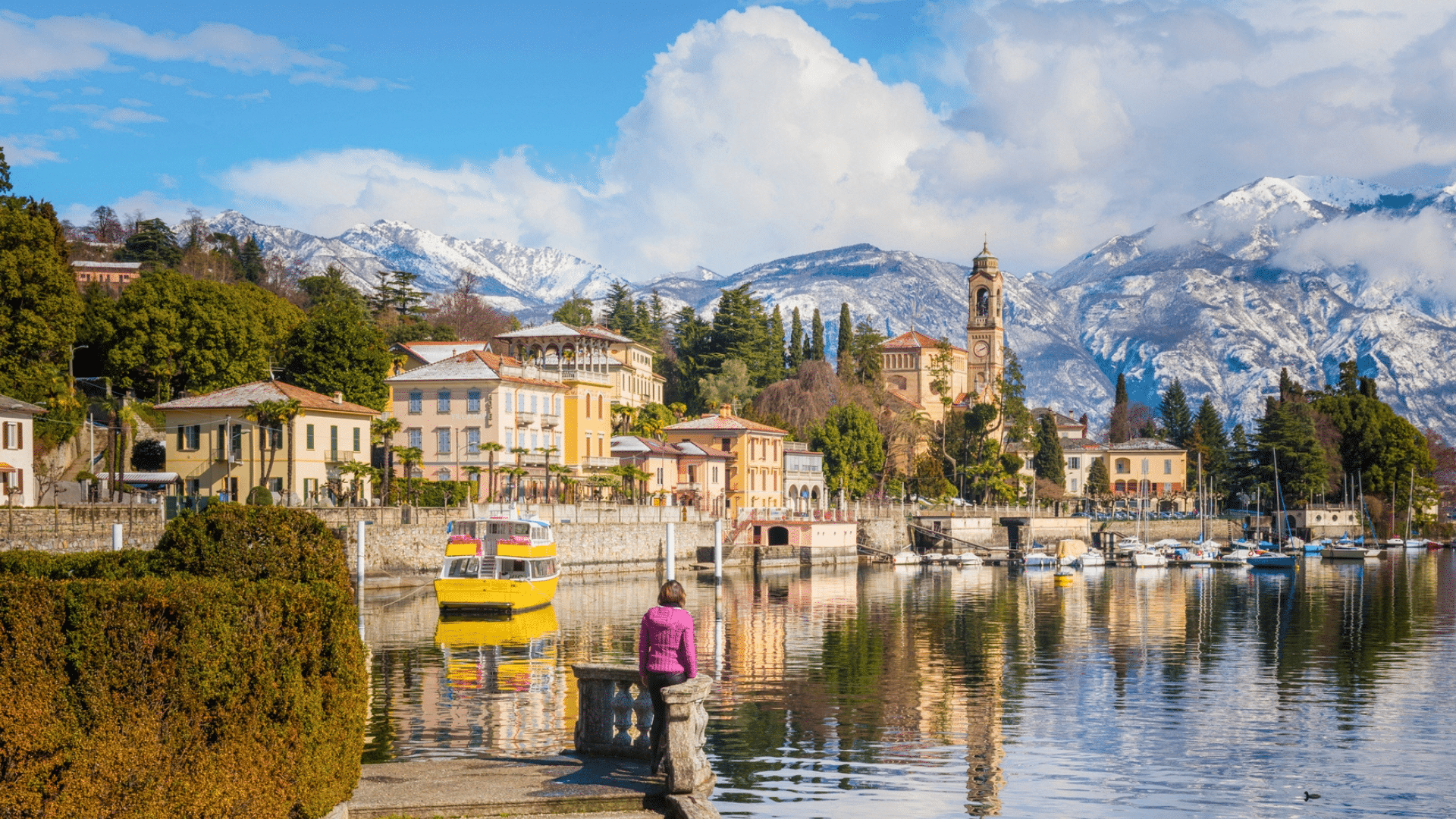
Lake Como villas are renowned for their grandeur and classical design. They have classic facades and expansive windows that offer beautiful views of the lake.
Lush gardens and private docks often surround these homes.
Type: Lakefront villa
Access: Visit Lake Como for a chance to see some of the area’s grandest waterfront properties.
Amalfi Coast: Seaside Villas with Mediterranean Influences
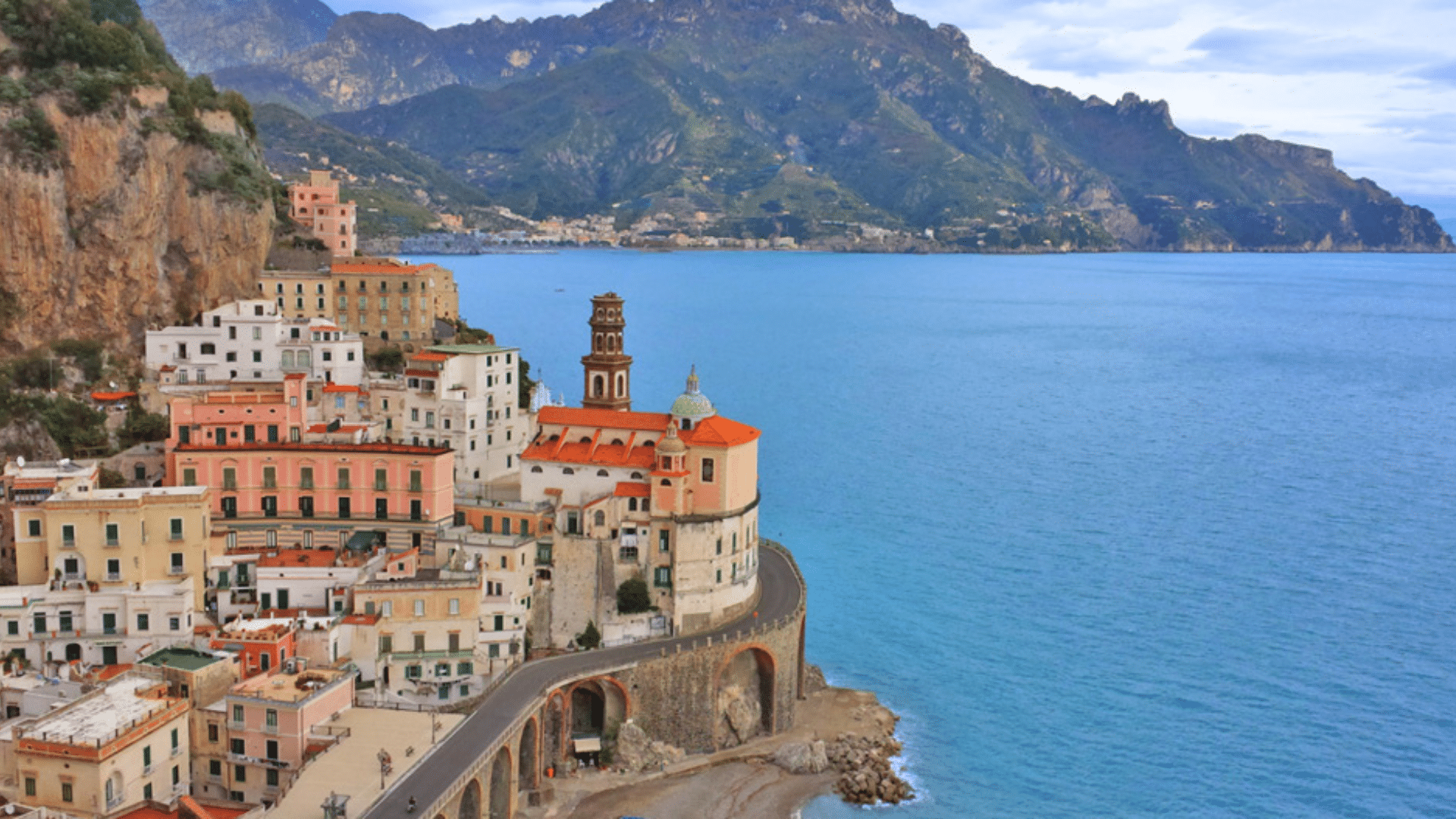
The villas along the Amalfi Coast offer a mix of Mediterranean styles, with whitewashed walls, colorful tiles, and expansive terraces designed to take in breathtaking coastal views.
Type: Seaside villa
Access: Explore the Amalfi Coast to discover these vibrant, sun-soaked homes with sweeping views of the sea.
Puglia: Traditional Trulli and Masserie Buildings
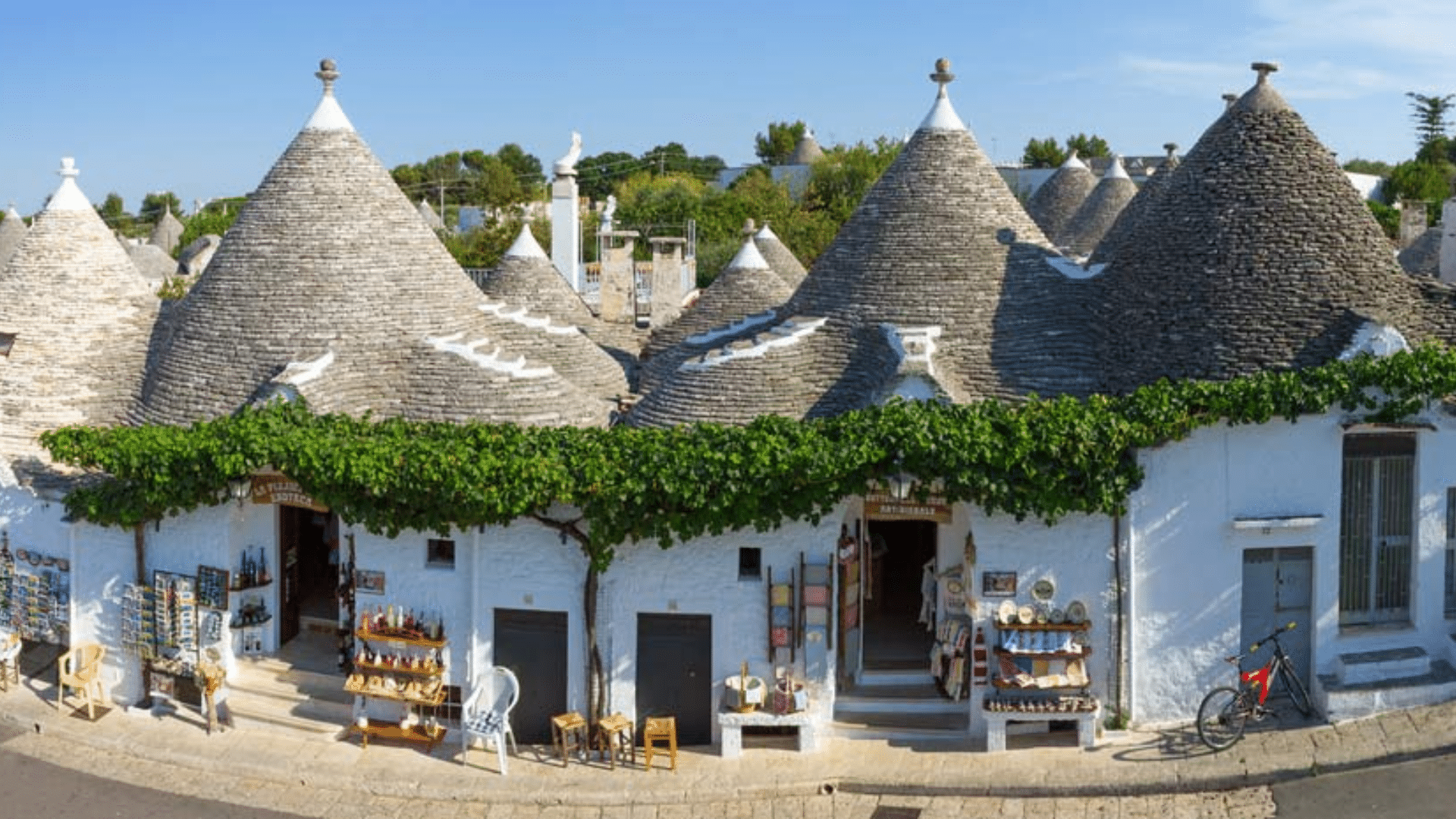
Puglia is home to unique architectural gems like trulli and masserie. Trulli are small, stone homes with conical roofs, while masserie are fortified farmhouses offering large courtyards.
Type: Trulli and masserie
Access: Visit Puglia to see these traditional structures that reflect the region’s agricultural past.
Sicily: Island Homes with Diverse Historical Influences
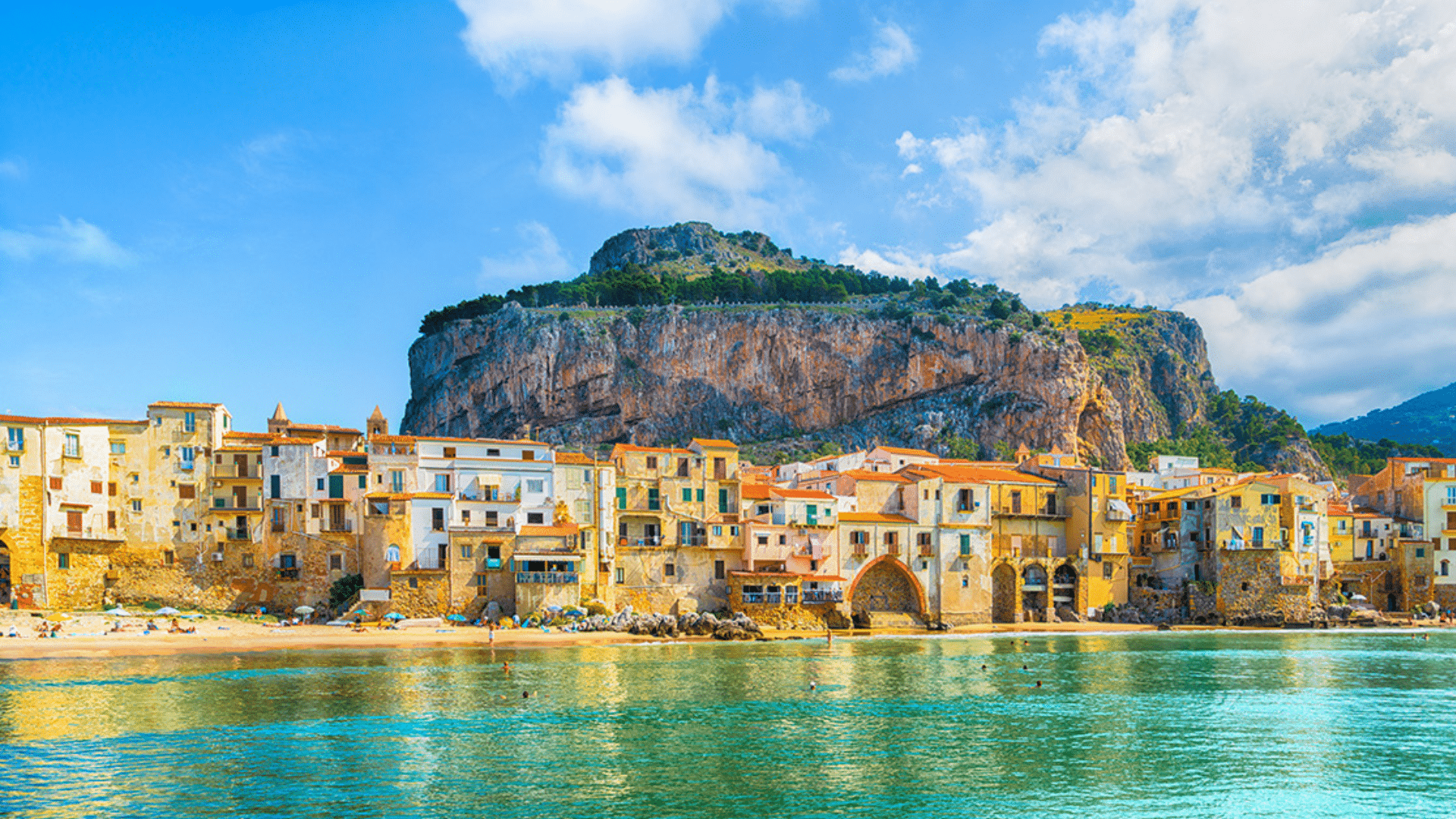
Sicilian villas showcase a blend of Greek, Norman, and Baroque influences, often featuring beautiful stone carvings and arched doorways.
These homes stand as proof of Sicily’s rich cultural history.
Type: Island villa
Access: Explore Sicily to witness the architectural diversity of its villas, shaped by centuries of cultural influence.
Inside the Italian Villa: Design & Furnishings
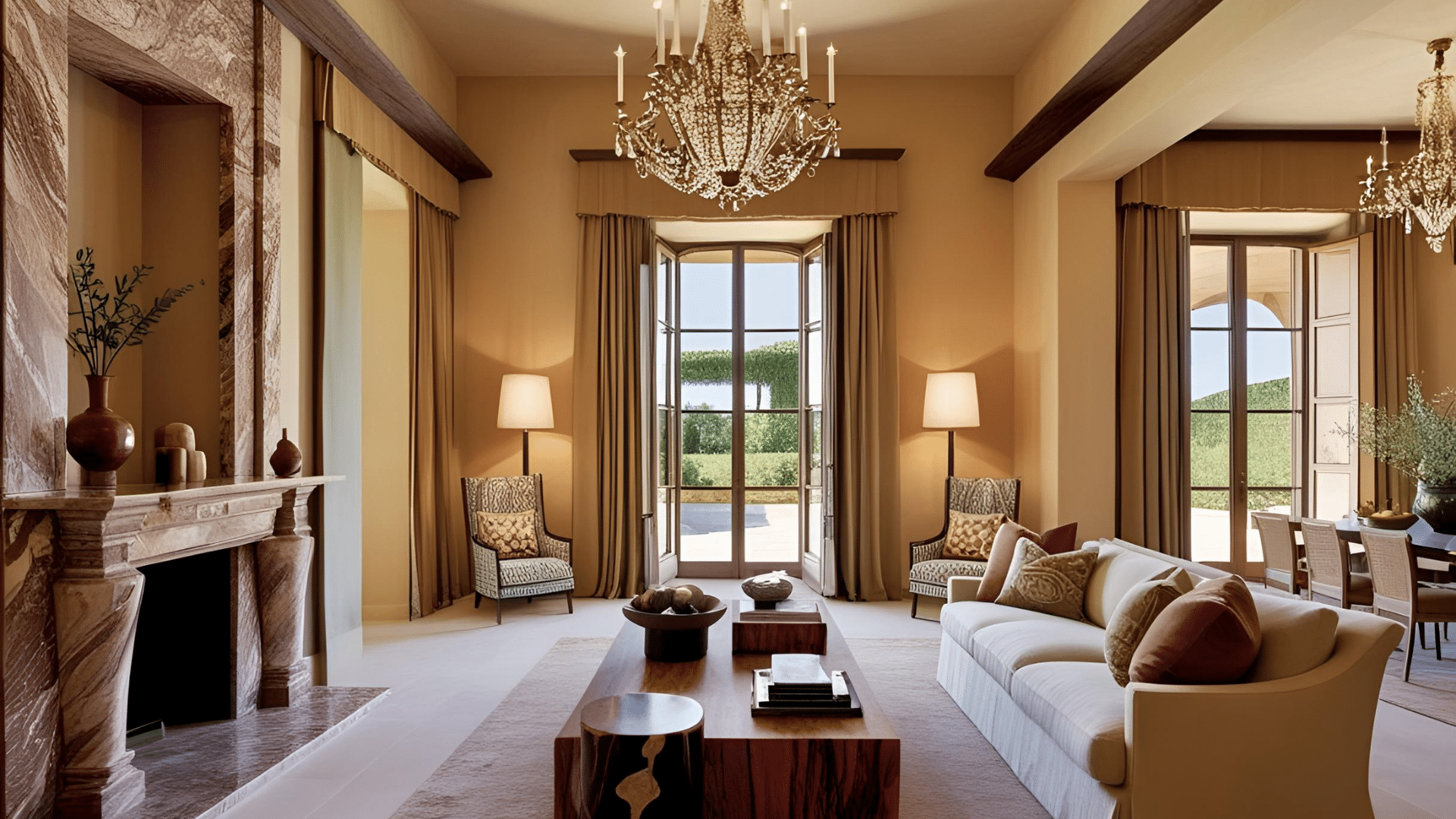
Italian villa interiors balance classic charm with modern functionality.
Rich materials, polished furniture, and thoughtful design choices create an atmosphere of warmth and style, seamlessly merging traditional charm with contemporary comfort.
Color Choices: Earth Tones and Mediterranean Shades
The color palette in Italian villas often features earthy tones such as terracotta, ochre, and warm browns alongside Mediterranean shades like deep blues and greens.
These colors reflect the natural surroundings of the Italian countryside and seaside, creating a soothing, classic atmosphere indoors.
Notable Italian Furniture Makers and Brands
Italian furniture brands like Boffi, B&B Italia, and Knoll are world-renowned for their craftsmanship and design innovation.
These companies have a rich history of blending traditional Italian craftsmanship with modern functionality.
Offering a range of luxurious yet functional furniture that complements the elegance of the villa.
Blending Traditional and Modern Design Elements
Italian villas seamlessly blend traditional and modern design elements.
Classic features such as handcrafted wood furniture, ornate chandeliers, and frescoed ceilings are juxtaposed with sleek, contemporary furnishings.
This combination preserves the villa’s historical charm while meeting the demands of modern living.
Materials: Wood, Marble, Ceramics, and Textiles
The materials used in Italian villa interiors are carefully chosen to enhance both aesthetics and functionality.
Wood, marble, ceramics, and textiles are common, with marble floors and countertops, wooden furniture, and ceramic tiles adding texture and depth to the spaces.
These materials are often sourced locally, reflecting the regional character of the home.
Lighting Design for an Authentic Italian Villa Atmosphere
Lighting plays a crucial role in creating the authentic Italian villa feel.
The lighting design emphasizes the grandeur and warmth of the villa, from grand chandeliers in living rooms to soft, ambient lighting in courtyards.
Natural light is maximized through large windows and open spaces, bathing the interiors in sunlight, while strategically placed lighting adds elegance in the evenings.
Modern Comforts in Today’s Italian Villas
Italian villas today seamlessly combine luxury with modern conveniences, offering a blend of tradition and innovation.
These features bring the timeless charm of Italian design into the present day.
-
Infinity Pools with Panoramic Views: Offering stunning vistas, infinity pools take outdoor living spaces to a whole new level while providing a tranquil retreat.
-
Wine Storage and Tasting Areas: Purpose-built wine cellars and tasting rooms reflect Italy’s rich winemaking culture, offering spaces for connoisseurs to savor fine selections.
-
Outdoor Kitchens and Dining Spaces: Outdoor kitchens and dining areas promote the Italian lifestyle of enjoying meals al fresco, often complemented by scenic gardens or terraces.
-
Wellness Features (Spas, Saunas, Exercise Rooms): Modern Italian villas incorporate wellness areas, including spas, saunas, and home gyms, creating private spaces for relaxation and health.
- Integrating Modern Technology into Historic Villas: Technology is discreetly integrated into the villa’s design, ensuring comfort and functionality without detracting from the architectural heritage.
Notable Italian Villas to Visit
Notable Italian villas offer a glimpse into the country’s rich history, architectural beauty, and scenic landscapes.
Each villa has its unique charm, reflecting different periods and styles in Italian design.
Villa d’Este (Tivoli)

Villa d’Este is a UNESCO World Heritage site famous for its magnificent Renaissance gardens and elaborate fountains.
Built in the 16th century, it is one of Italy’s most celebrated villas, with its grand water features and lush landscapes.
Villa Balbiano (Lake Como)
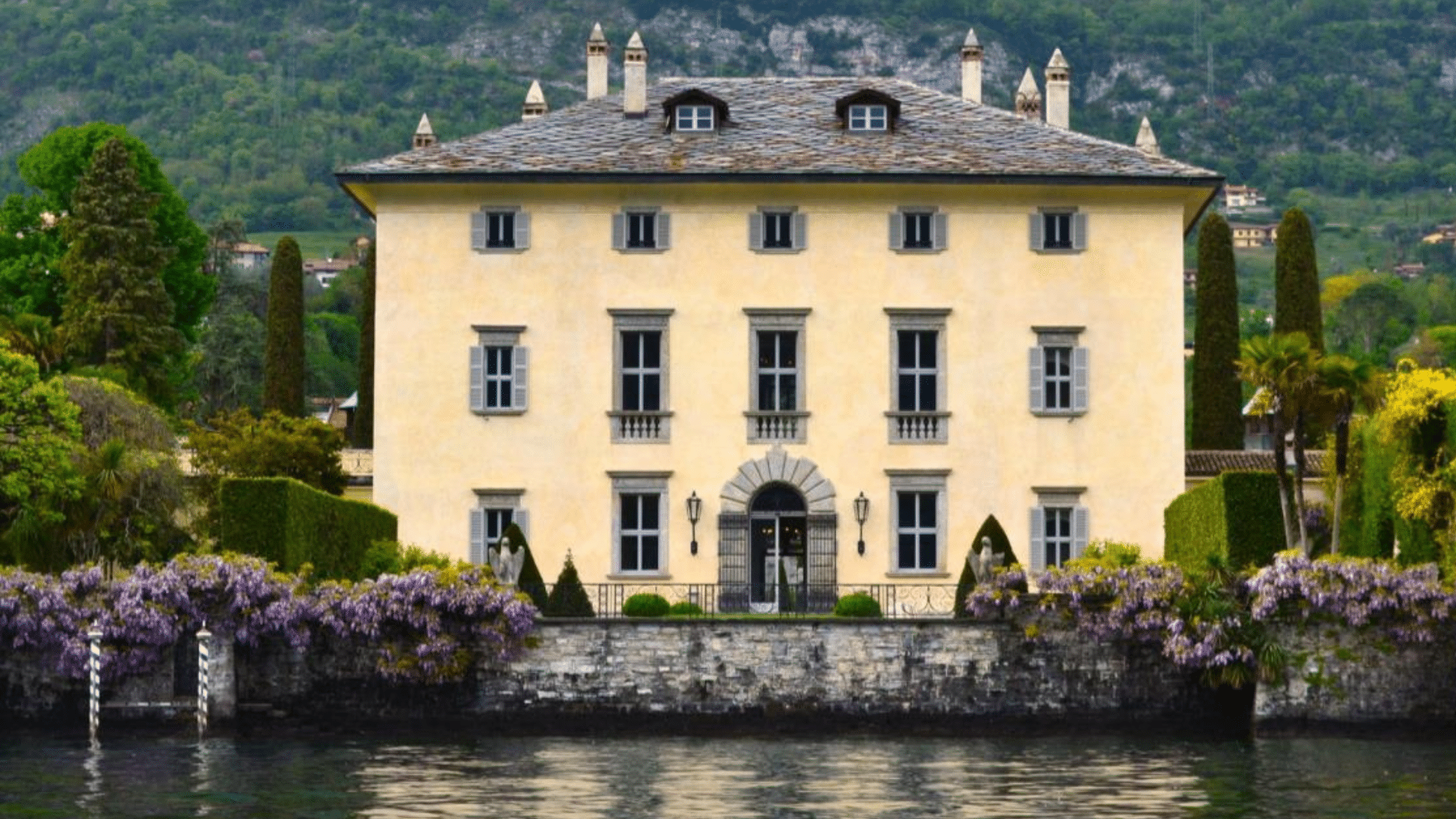
Overlooking the serene waters of Lake Como, Villa Balbiano is a masterpiece of classical architecture.
This grand estate shows off luxurious interiors, lush gardens, and a rich history, making it a sought-after location for films and events.
Villa Lissoni (Lake Como)
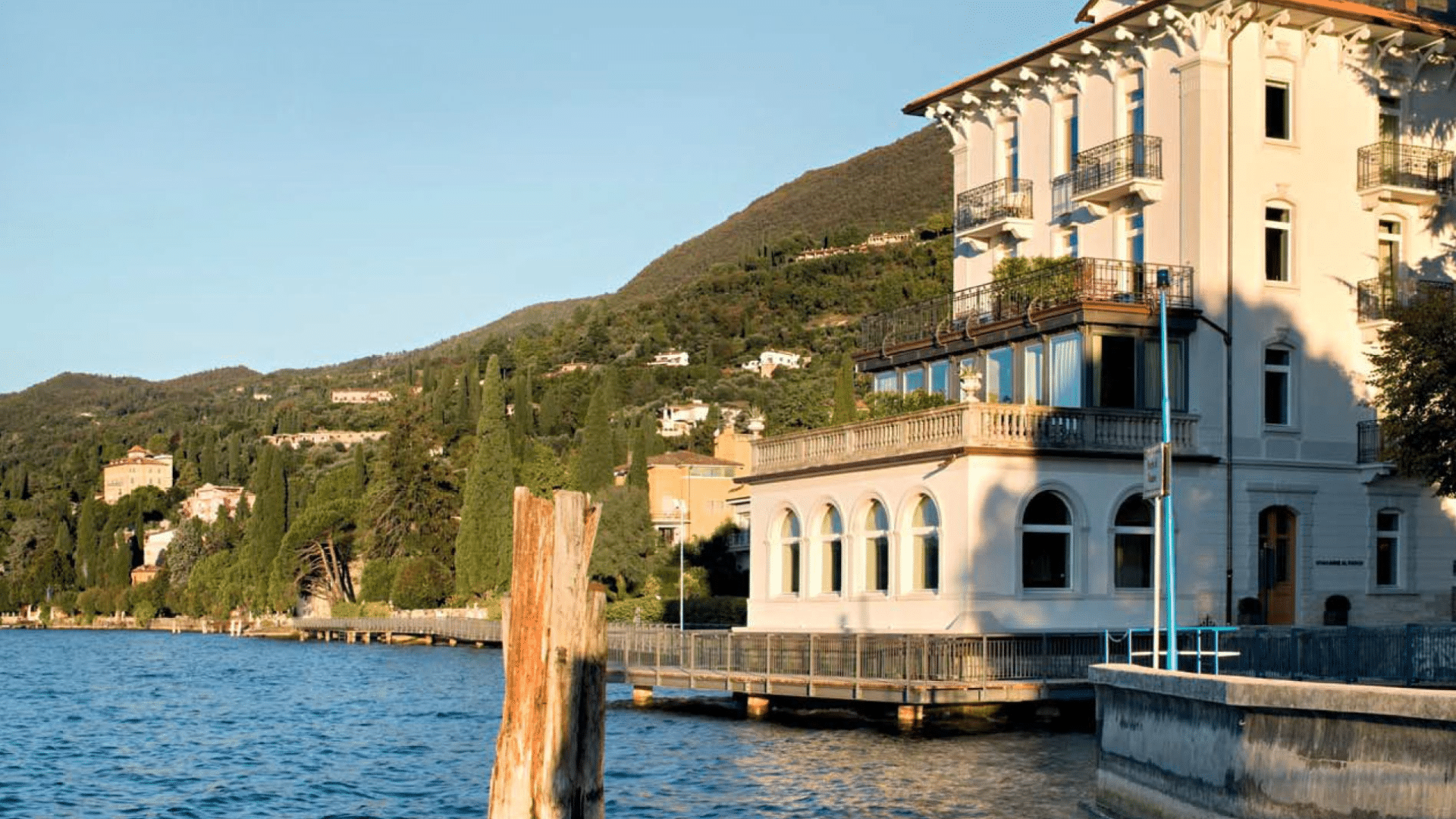
Designed by architect Piero Lissoni, this villa represents a perfect blend of historic charm and modern elegance.
Its renovation preserves traditional Italian style while introducing contemporary elements, such as minimalist interiors and open spaces that welcome the lake’s natural beauty.
Villa Oleandra (Lake Como)

Famous as George Clooney’s residence, Villa Oleandra is a luxurious retreat featuring grand terraces, private gardens, and stunning lake views.
Frequently in the spotlight, it has become a symbol of class, attracting visitors who want to take a peek into celebrities’ lives in Italy.
Villa Treviso
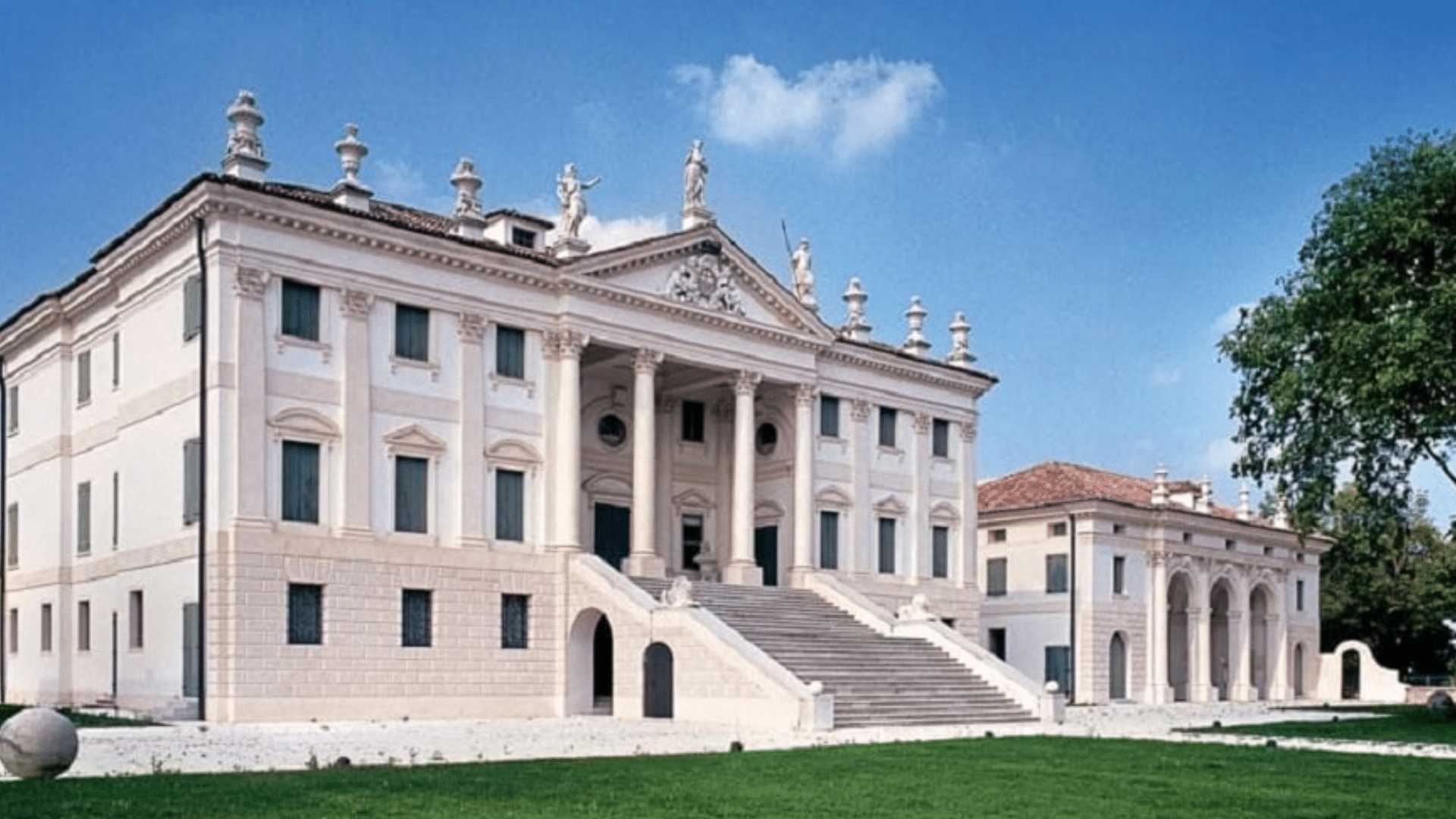
Villa Treviso is a modern architectural feat that combines Italian tradition with sustainable innovations.
Featuring energy-efficient materials, smart home technology, and eco-friendly landscaping, this villa exemplifies how contemporary design can harmonize with Italy’s timeless aesthetic.
Practical Tips for Italian Villa Owners or Renters
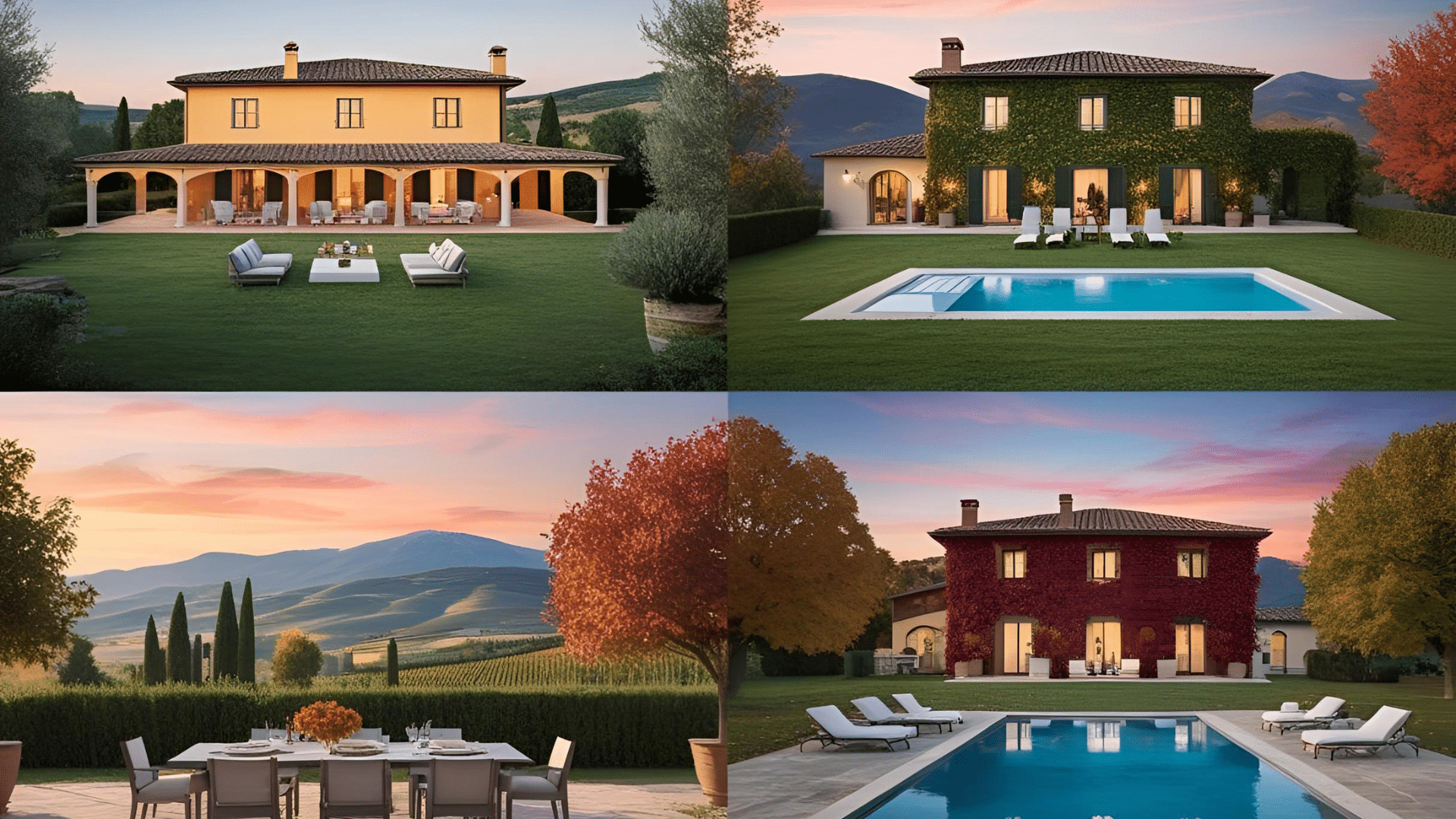
Living in an Italian villa is both fun and challenging. Here’s what you need to know to care for these beautiful old homes and make the most of your time in Italy.
Seasonal Considerations
Living in an Italian villa changes with each season.
- Summer: Perfect for outdoor living, pool enjoyment, and alfresco dining.
- Fall: Experience harvest activities, changing landscapes, and local festivals.
- Winter: Ensure adequate heating systems for older stone structures.
- Spring: Enjoy blossoming gardens and fresh air with open windows.
Maintenance Essentials
Taking care of an Italian villa needs regular attention.
- Regular inspection of tile roofs and stone walls for needed repairs.
- Periodic treatment of wooden beams against insects and humidity damage.
- Updates to often antiquated plumbing and electrical systems.
- Consistent garden maintenance to preserve landscape design.
- Budget 1-2% of property value annually for maintenance costs.
Working with Local Expertise
Italian work customs might be different from what you’re used to – pay attention to local holidays and how people expect to be paid. Learning basic Itallian
Make friends with local gardeners who know Italian plants and growing methods. Find house cleaners who have worked with old properties and know how to care for antiques.
Connect with local plumbers and electricians who understand how older buildings work.
Conclusion
Italian villa houses showcase a classic mix of history, architecture, and natural beauty.
From the grandeur of historic estates like Villa d’Este to contemporary renovations that honor tradition while adopting modern innovation, these homes reflect Italy’s cultural heritage.
Find public landmarks, admire celebrity-owned retreats, or appreciate sustainable new designs. Each villa tells a unique story.
Its interiors seamlessly blend classic beauty with modern comfort, making them both functional and visually striking.
Experiencing these villas offers a deeper appreciation of Italian design and lifestyle, leaving a lasting impression on anyone drawn to Italian history, art, and architecture.

